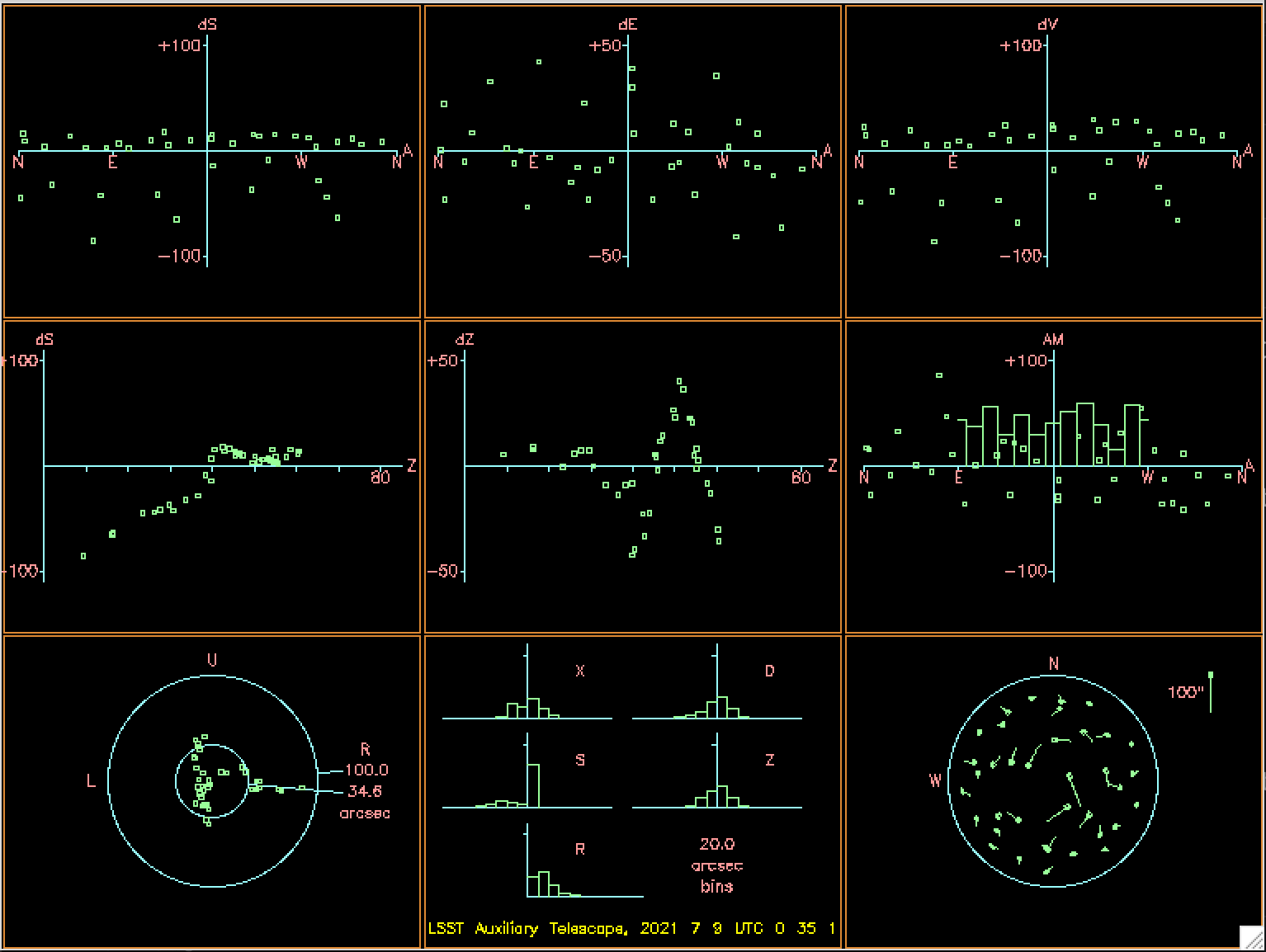Pointing model run 2021/07¶
This run was an initial follow-up on the discoveries we made while analyzing the data from Pointing model run 2021/06.
We initially suspected that the strange pointing model residuals could mainly be a result of M2 motion. While inspecting the spider we noticed that some of them where indeed quite loose, which strentened our suspicions.
In the afternoon before the second night of the run, the M2 spider arms where tightened before the night started. We then obtained data to build a new pointing model, as well as to build hexapod lookup tables.
During this run we also had installed position measurement devices in the back of M1 so we could differentiate between M2 and M1 motion. For more information see sitcomtn-015.
Observations¶
The data for this run was taken following a similar procedure to that of Observations.
Data Analysis¶
The data analysis follows a similar procedure to that of Data Analysis.
EFD Data Mining¶
papermill -p year 2021 -p month 07 -p day 06 -p time_window 4 -p data_path /lsstdata/offline/instrument/LATISS/gen2repo reducing_pointing_data.ipynb reducing_pointing_data_20210706_tw004.ipynb
Generating Pointing File¶
papermill -p pointing_data_file data/20210706/AT_point_data_20210706_tw004.pickle build_pointing_data.ipynb build_pointing_data_20210706_tw004.ipynb
Generating Pointing Model¶

Figure 2 The “9 favorite plots for altazimuth”. This plot gathers the 9 most relevant plots with information about the pointing model fit for an altaz mount.
The following is the model fitted above:
coeff change value sigma
1 IA +0.001 -172.38 8.281
2 IE -0.216 -217.46 31.147
3 AN +0.063 +36.94 6.539
4 AW +0.068 +74.06 6.568
5 TF -1.259 +202.71 108.183
6 TX10 +0.731 -192.53 46.013
Sky RMS = 34.62
Popn SD = 37.82
Conclusions¶
As can be seen in Figure 2 we still experience the same pointing behavior as in Pointing model run 2021/06, after tightening the M2 spider.
During the run we used the M1 position measured and could verify that for lower elevation the mirror was being lifted out of the hard points. We also observed considerable histerysis in the mirror position, which both explains the non-repeatability of the pointing and the sharp change in pointing for lower elevations.
For the following observing runs we focused in re-constructing the M1 pressure lookup table and obtaining a new dataset for the pointing model.